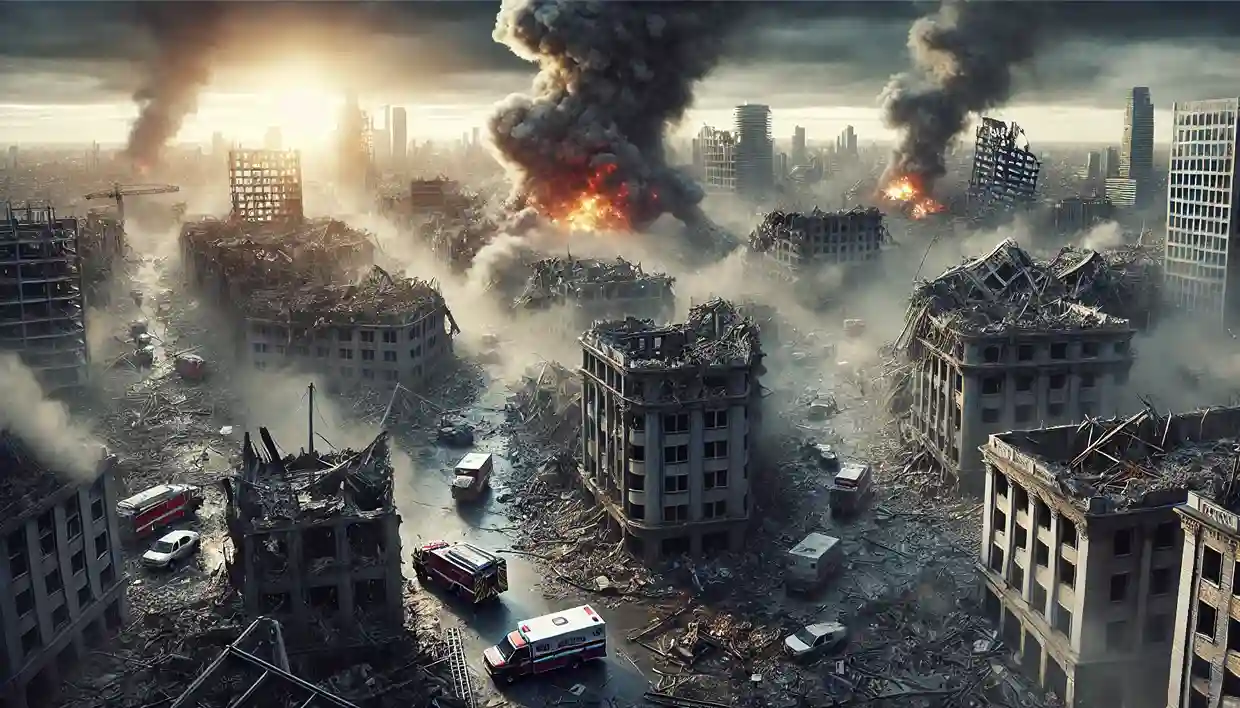Ever wondered how the gears of the American economy keep turning? One critical piece of this puzzle is industrial production. It’s not just about factories and assembly lines—it’s the heartbeat of economic activity. In this article, we’re diving deep into US industrial production, peeling back the layers to reveal expert analysis and future predictions. Buckle up, because we’re about to embark on a journey through the highs and lows of American industry, with a touch of humor and a pinch of skepticism.
What is Industrial Production?
Industrial production measures the output of the industrial sector, which includes manufacturing, mining, and utilities. It’s like the pulse check for the economy, giving us insights into how healthy or sick it is. Think of it as the scoreboard for all the stuff we produce and consume. If the score’s high, we’re winning; if it’s low, we’re in trouble.

The Historical Context
A Glimpse into the Past
Industrial production in the US has a rich history, intertwined with wars, technological advancements, and economic policies. Remember the Industrial Revolution? It was like the original tech boom, where steam engines and mechanization turned everything upside down. Fast forward to the 20th century, and we see massive factories churning out goods during World War II. This was the golden era, but what goes up must come down.
Post-War Boom and Bust
After the war, America enjoyed a production boom, but it wasn’t all sunshine and rainbows. The 1970s brought oil crises and economic downturns. It was like riding a rollercoaster with more downs than ups. Factories closed, jobs were lost, and industrial production took a nosedive.
Key Drivers of Industrial Production
Technological Advancements
Technology is a double-edged sword. On one hand, it boosts decision efficiency and output. On the other, it can make entire job sectors obsolete. Remember when robots invaded factories? It was like a sci-fi movie come to life, except real people lost their jobs.
Global Trade Dynamics
Trade policies and international relations play a huge role in industrial production. Tariffs, trade wars, and export-import regulations can make or break the industry. It’s a bit like trying to play chess while someone keeps changing the rules.
Economic Policies and Regulations
Government policies, taxes, and regulations can either nurture or strangle industrial production. Think of it as gardening—you need the right balance of sunlight (tax breaks) and water (regulations) to help the plants (industries) grow.
Recent Trends in US Industrial Production
Post-Pandemic Recovery
The COVID-19 pandemic was a punch to the gut for many industries. Factories shut down, supply chains were disrupted, and production plummeted. But like a resilient boxer, the US industrial sector has been getting back on its feet, albeit slowly and painfully.
Sustainability and Green Initiatives
There’s a growing emphasis on sustainability. Companies are now focusing on eco-friendly production methods. It’s like switching from gas-guzzling SUVs to electric cars—not easy, but necessary.
Digital Transformation
Industries are embracing digital technologies like IoT, AI, and big data. It’s a brave new world where machines talk to each other, and data drives decisions. But with great power comes great responsibility, and the digital shift is not without its challenges.
Challenges Facing US Industrial Production
Supply Chain Disruptions
The global supply chain is a delicate web. One small snag, like a ship stuck in the Suez Canal, and the whole system unravels. It’s like dominoes—once one falls, the rest follow.
Labor Shortages
Finding skilled labor is becoming increasingly difficult. It’s like looking for a needle in a haystack. The aging workforce and lack of interest in manufacturing jobs among the younger generation add fuel to the fire.
Regulatory Hurdles
Navigating through the maze of regulations is a daunting task. It’s like trying to find your way out of a labyrinth while blindfolded. Compliance costs and bureaucratic red tape can stifle innovation and growth.
Expert Analysis: Current State of US Industrial Production
Economic Indicators
Key indicators like the Industrial Production Index (IPI) and capacity utilization rates provide a snapshot of the current state. Think of them as the dashboard lights in your car—when they’re green, everything’s fine; when they’re red, you’ve got problems.
Sector Performance
Different sectors within industrial production are performing variably. Manufacturing might be cruising, while mining is sputtering. It’s like a sports team where some players are in top form, and others are struggling.
Future Predictions for US Industrial Production
Technological Innovations
Expect more robots, AI, and automation. The future is high-tech, and industries that fail to adapt will be left in the dust. It’s a bit like Darwin’s survival of the fittest—adapt or perish.
Global Economic Shifts
Economic power is shifting eastwards, with China and India emerging as industrial giants. The US will need to up its game to stay competitive. It’s like being in a relay race where the other teams are catching up fast.
Sustainability Focus
The push towards green energy and sustainable practices will intensify. Companies that don’t get on board will face backlash from consumers and regulators. It’s like being on a sinking ship—either you patch the holes or go down with it.
Impact on Businesses and Consumers
For Businesses
Industrial production trends dictate business strategies. Companies need to stay agile and innovate to survive. It’s a constant game of chess, where every move matters.
For Consumers
Industrial production impacts everything from the price of goods to job availability. When production is up, prices go down, and jobs are plentiful. When it’s down, expect the opposite. It’s the invisible hand of the market at work.
Strategies for Navigating the Future
Embrace Technology
Businesses must invest in technology to stay competitive. It’s not just about keeping up with the Joneses; it’s about survival.
Focus on Sustainability
Going green isn’t just a trend; it’s the future. Companies that lead in sustainability will win consumer trust and regulatory approval.
Adapt to Global Changes
Staying informed and flexible is key. Global economic shifts are inevitable, and adaptability will be the difference between success and failure.
Conclusion
Industrial production is the backbone of the US economy, a complex system influenced by countless factors. From technological advancements to global economy trade dynamics, every element plays a part in shaping the future. As we navigate through challenges like supply chain disruptions and labor shortages, it’s crucial to stay agile and forward-thinking. The road ahead is fraught with uncertainty, but with the right strategies, businesses and consumers can ride the waves of change and emerge stronger.
FAQs
1. What is the Industrial Production Index (IPI)?
The IPI measures the real output of the manufacturing, mining, and utilities sectors. It’s like a report card for the industrial sector, showing how well or poorly it’s performing.
2. How does technology impact industrial production?
Technology boosts efficiency and output but can also displace jobs. It’s a double-edged sword that industries must wield carefully.
3. Why are supply chain disruptions a major issue?
Supply chain disruptions can halt production, increase costs, and delay deliveries. It’s like a traffic jam that affects the entire road network.
4. What role does sustainability play in industrial production?
Sustainability is increasingly important for regulatory compliance and consumer trust. Green practices are not just ethical but also economically beneficial in the long run.
5. How can businesses adapt to global economic shifts?
Businesses need to stay informed, flexible, and ready to innovate. Adapting to global changes involves strategic planning and a willingness to pivot when necessary.






